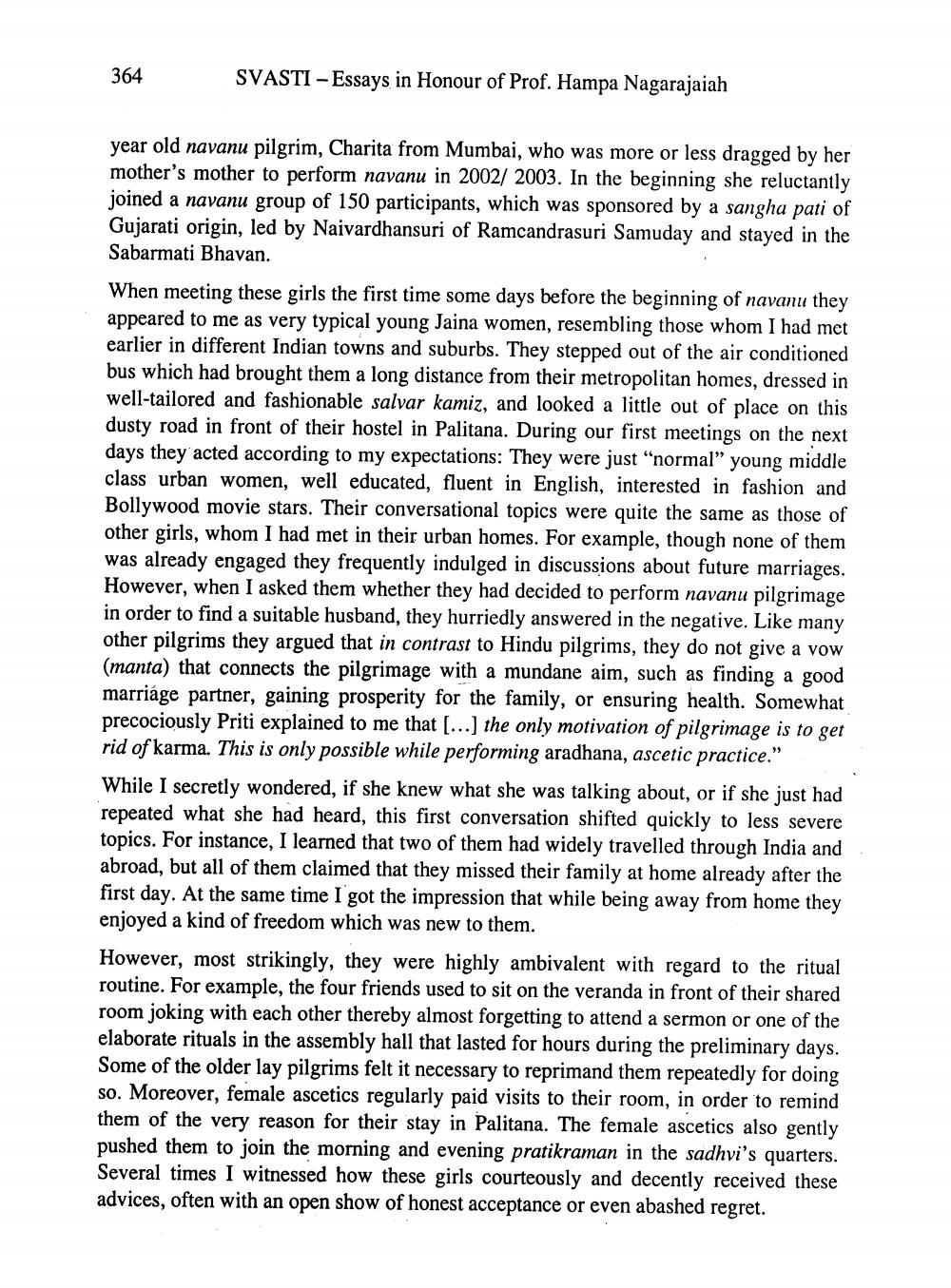________________
364
SVASTI – Essays in Honour of Prof. Hampa Nagarajaiah
year old navanu pilgrim, Charita from Mumbai, who was more or less dragged by her mother's mother to perform navanu in 2002/ 2003. In the beginning she reluctantly joined a navanu group of 150 participants, which was sponsored by a sangha pati of Gujarati origin, led by Naivardhansuri of Ramcandrasuri Samuday and stayed in the Sabarmati Bhavan. When meeting these girls the first time some days before the beginning of navanu they appeared to me as very typical young Jaina women, resembling those whom I had met earlier in different Indian towns and suburbs. They stepped out of the air conditioned bus which had brought them a long distance from their metropolitan homes, dressed in well-tailored and fashionable salvar kamiz, and looked a little out of place on this dusty road in front of their hostel in Palitana. During our first meetings on the next days they acted according to my expectations: They were just “normal” young middle class urban women, well educated, fluent in English, interested in fashion and Bollywood movie stars. Their conversational topics were quite the same as those of other girls, whom I had met in their urban homes. For example, though none of them was already engaged they frequently indulged in discussions about future marriages. However, when I asked them whether they had decided to perform navanu pilgrimage in order to find a suitable husband, they hurriedly answered in the negative. Like many other pilgrims they argued that in contrast to Hindu pilgrims, they do not give a vow (manta) that connects the pilgrimage with a mundane aim, such as finding a good marriage partner, gaining prosperity for the family, or ensuring health. Somewhat precociously Priti explained to me that [...] the only motivation of pilgrimage is to get rid of karma. This is only possible while performing aradhana, ascetic practice." While I secretly wondered, if she knew what she was talking about, or if she just had repeated what she had heard, this first conversation shifted quickly to less severe topics. For instance, I learned that two of them had widely travelled through India and abroad, but all of them claimed that they missed their family at home already after the first day. At the same time I got the impression that while being away from home they enjoyed a kind of freedom which was new to them. However, most strikingly, they were highly ambivalent with regard to the ritual routine. For example, the four friends used to sit on the veranda in front of their shared room joking with each other thereby almost forgetting to attend a sermon or one of the elaborate rituals in the assembly hall that lasted for hours during the preliminary days. Some of the older lay pilgrims felt it necessary to reprimand them repeatedly for doing so. Moreover, female ascetics regularly paid visits to their room, in order to remind them of the very reason for their stay in Palitana. The female ascetics also gently pushed them to join the morning and evening pratikraman in the sadhvi's quarters. Several times I witnessed how these girls courteously and decently received these advices, often with an open show of honest acceptance or even abashed regret.




